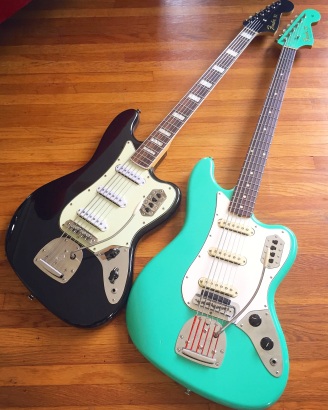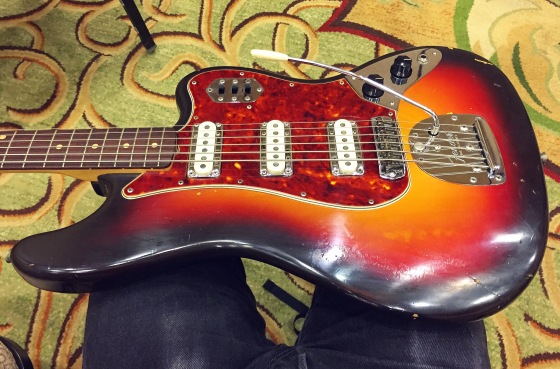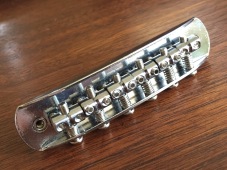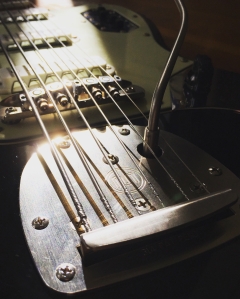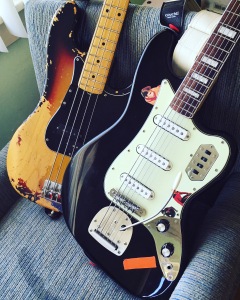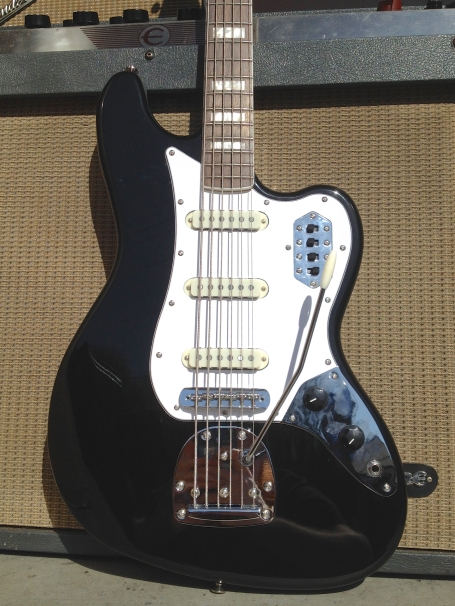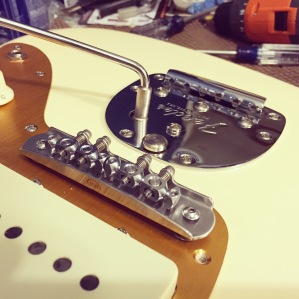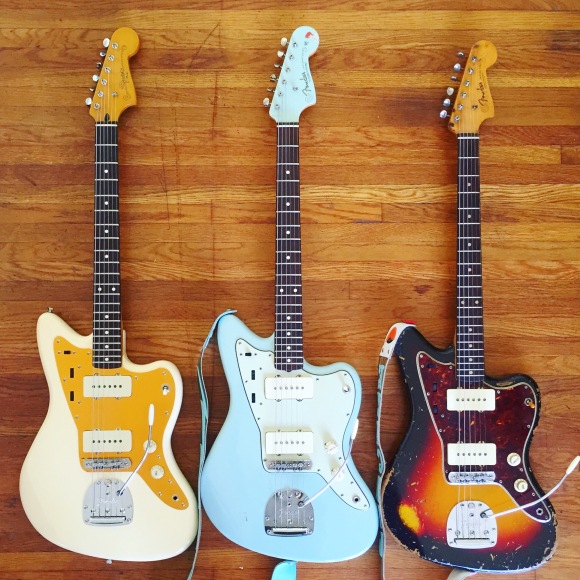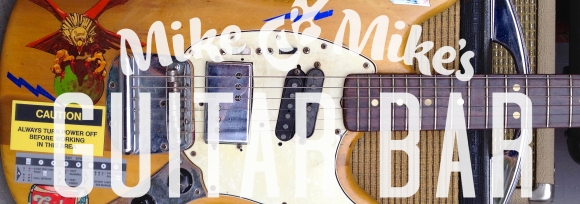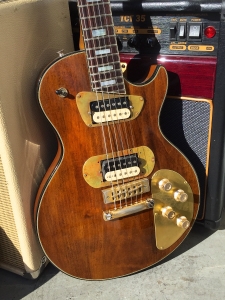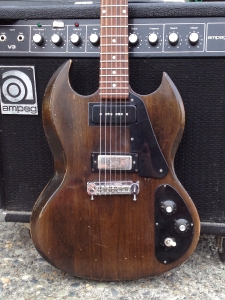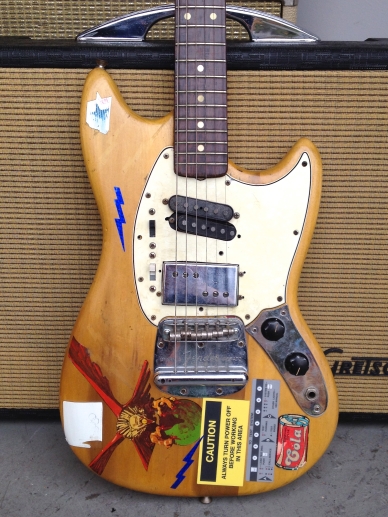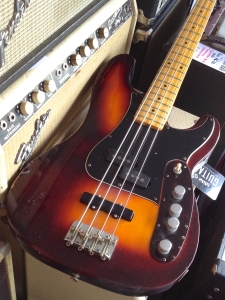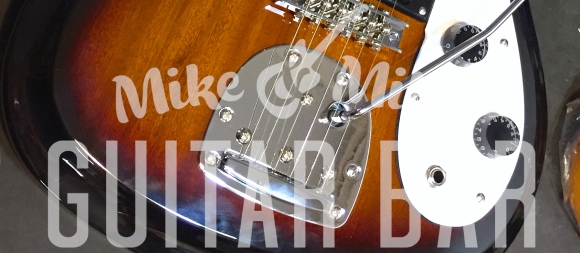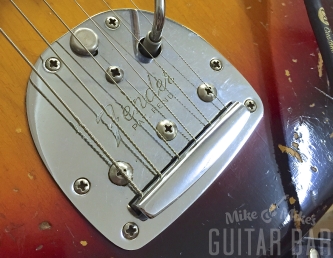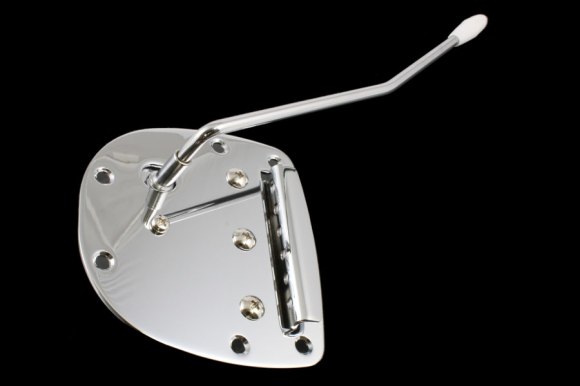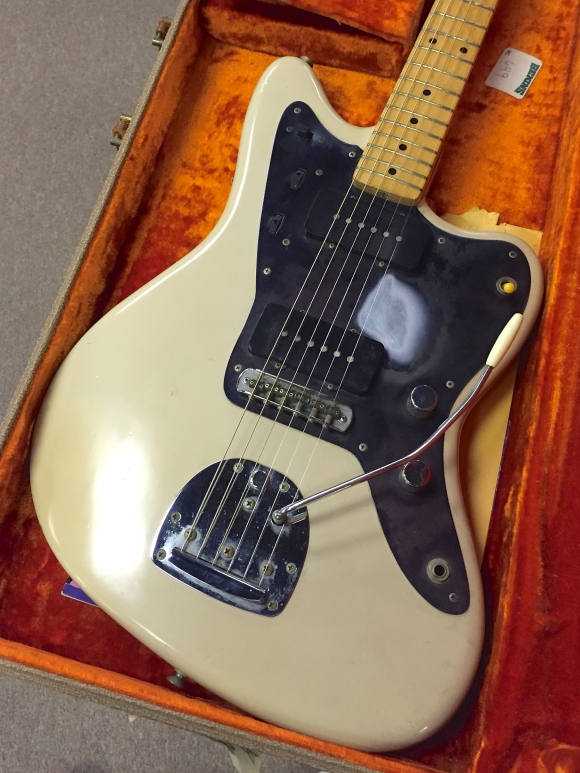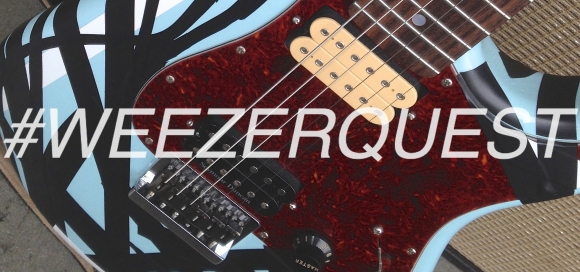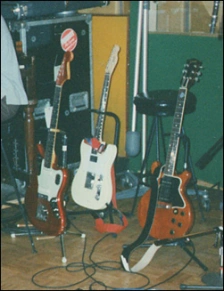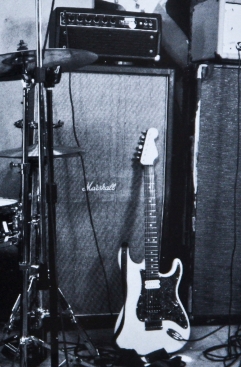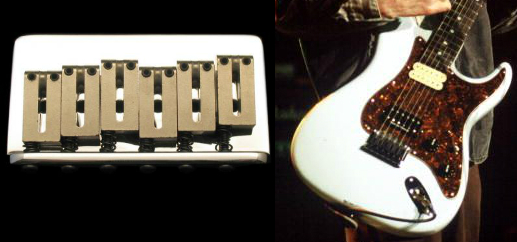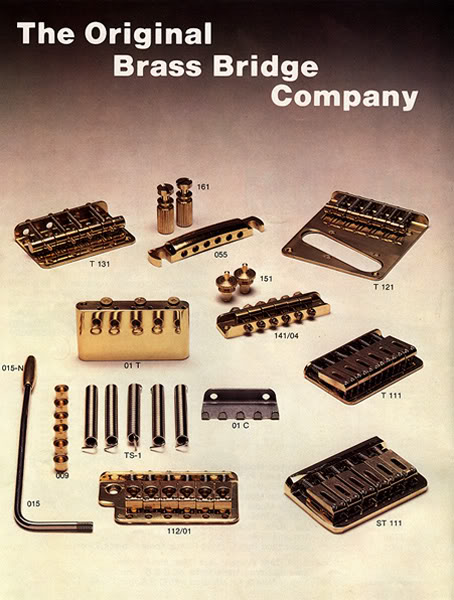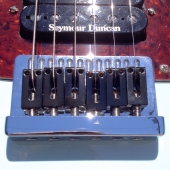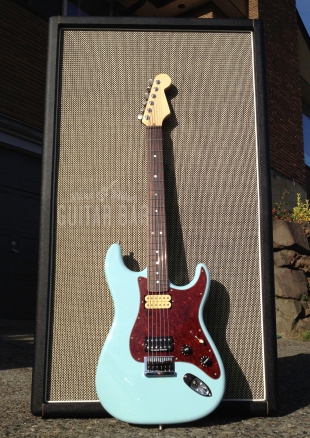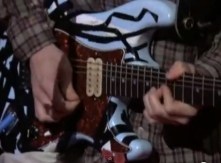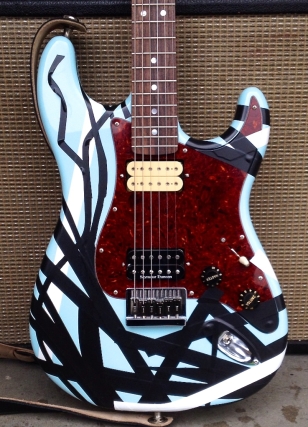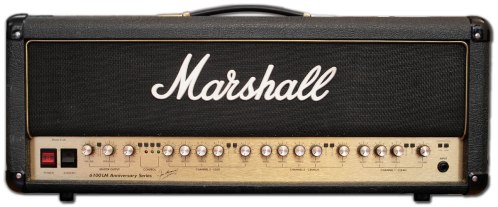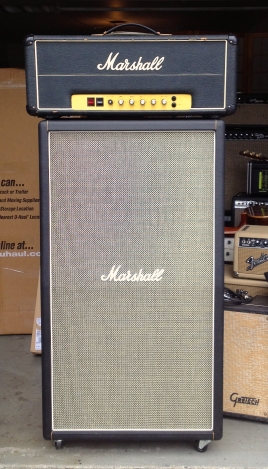Welcome back, dear readers, to our coverage of NAMM 2017. I spent my second and third days at NAMM attempting to see and play as many things as I could, and although there’s a rather large list of booths I didn’t get to see, I definitely got the full NAMM experience (and I’m not even sick, thank the maker).
And on a personal note, if you were one of the many, many new friends that stopped to tell me how much you love the shop and my Instagram posts, thank you. You made me so happy. I felt like a celebrity!
Ernie Ball | Music Man (Booth 5440)
At NAMM 2016, EB was one of those must-see exhibits for me. The newly-announced St. Vincent model had my attention from the first rumors of its release, and it blew me away with its angular design, light weight, and fantastic neck. This was one of the first new guitars to really wow me in years. I still really, really want one! 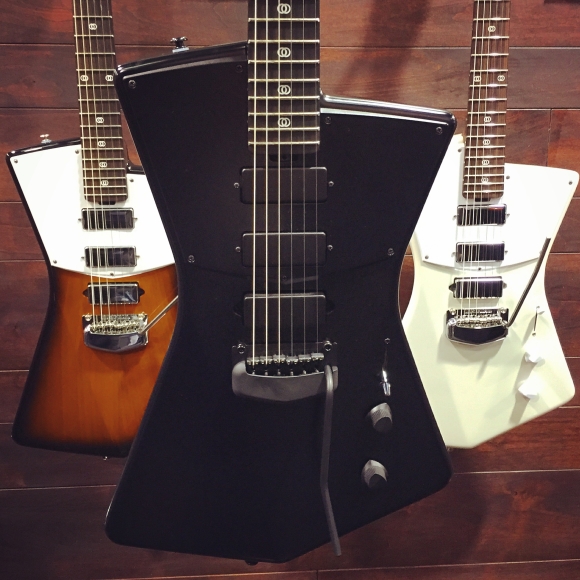
Now that there are four new color options, I’m even more into this guitar model. There’s an all-white model that Annie Clark calls “The Thin White Duke” (an homage to the late David Bowie); an “Angus Young” wine red with gold hardware; a very Firebird vintage sunburst; and my favorite, the “Stealth” model, fully blacked-out, looking tough as nails. I absolutely must own this guitar.
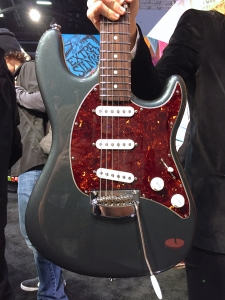
Just like last year’s standard blue and black, these guitars boast three mini-humbucker pickups, the smooth and stable Ernie Ball Music Man tremolo, 5-way switching and Schaller locking tuners. Yes, please.
Thanks to Robert Ochoa, internet friend and Ernie Ball guitar tech, I also spent some time with their Cutlass model in a very attractive Charcoal Frost finish. I may not be much for Strats, but this fresh take on the shape felt comfortable and played like a dream. Thanks, Robert!
Ernie Ball also announced their new line of strings, intriguingly dubbed, “PARADIGM.” The advertising claims these strings won’t break––like, ever––and if they do Ernie Ball will replace them. Seems like quite a tall order to me, but hey, only time will tell. I’m hoping to pick up a pack of these strings to give them a go based on the claim alone. With so many variables that affect string longevity, I’m curious to see how they’ve fortified their strings.
CURTIS NOVAK
I caught up with Curtis Novak while passing by the EarthQuaker Devices booth, and it’s always good to hang out with him. It’s no secret that I adore Curtis’ work; from authentic and tuneful Jazzmaster pickups to recreations of my favorite off-brand pickups of the 1960s, Curtis knows what a good pickup should sound like. And while his standard designs are wonderful, his work really shines when he gets to shove something weird under a non-traditional cover.
For some time, Curtis Novak has been the only maker to offer a version of my favorite Gold Foil pickup, the DeArmond/Rowe-made units found most commonly on Silvertone and Harmony guitars. My favorites have always been wound extremely hot, sometimes in the 10-12K range, and Curtis not only nails the look but the output as well. In addition to new Diamond and Mustache covers, Curtis also has some new options for foil inserts as well. Those sparkles are right up my alley.
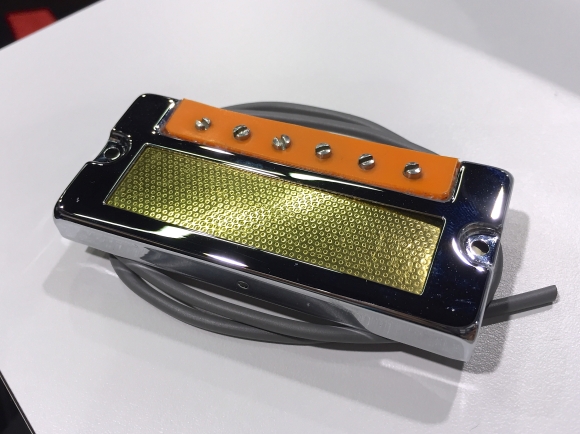
This NAMM also served as the official unveiling of his new Guyatone-style gold foil (pictured above) which comes complete with the right materials and covers made to his exacting specs. I had the good fortune to play this pickup at the last Fretboard Journal Summit, and I have to say that it captures the twangy beauty of the low-output originals to a staggering degree. Simply amazing work, Curtis!
And since I happened by the EarthQuaker booth at just the right time, I stuck around for a demo set by Fabi and Laurence from She Shreds magazine, one of my favorite guitar mags out there. I’m a huge fan of their work and focus on the music industry from the perspective of female players. It’s important, necessary work they’re doing.
HOTONE (Booth 5995)
Before leaving the EQD booth, I ran into O, a fixture in the music industry. He’s a guitarist, band manager for Dinosaur Jr., photographer, pedal connoisseur, and the reason that the Squier Super-Sonic was on my radar back in the late 1990s. The man is filled with stories, and his Instagram series “One Photo and One Photo Only” is one of the few ongoing series that I look forward to these days.
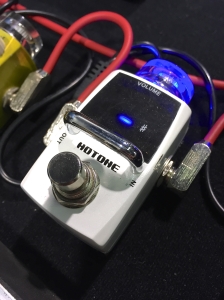 After chatting for a while, we decide to walk the floor for a bit. We were mere booths away when O told me, “Oh, you gotta check out this tuner pedal. It’s the best tuner pedal in the world.” When O says something like that, I take it at face value. We followed him to the HOTONE booth, where he pointed out a comically small pedal and declared, “There it is, my favorite tuner pedal ever.”
After chatting for a while, we decide to walk the floor for a bit. We were mere booths away when O told me, “Oh, you gotta check out this tuner pedal. It’s the best tuner pedal in the world.” When O says something like that, I take it at face value. We followed him to the HOTONE booth, where he pointed out a comically small pedal and declared, “There it is, my favorite tuner pedal ever.”
I know what you’re thinking: “It’s a tuner. How good could it be?” First things first, this Skyline Series tuner pedal tracks fantastically, and is true-bypass so it’s out of your signal chain when disengaged. And again, it’s small, so it won’t take up valuable space on your pedal board. It’s also inexpensive, with most new prices floating somewhere between $59.99 and $69.99. All of these are good things.
But what’s that there, at the top of the pedal? It’s what makes this pedal so great: a knob that controls the pedal’s volume when engaged, from silent to 12 db of boost! This is a fantastic boost pedal, and I’m so glad I got clued into this thing. How’s it sound? In the words of O: “Gnar.”
SAUL KOLL (Booth 1589)
Saul Koll may have had the coolest booth of the whole show, and you know this before you ever see a guitar. It’s better to just show you rather than try to explain:
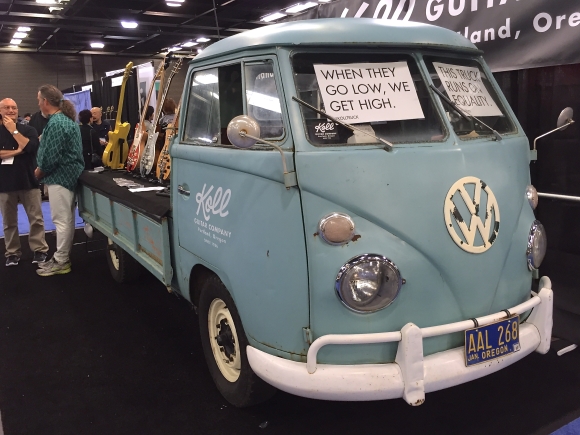
Dude drove his booth to NAMM. And it’s a VW single-cab pickup, no less. I’m not sure if this has ever been done before, but if it has, there’s no way it could have had the style of this year’s Koll Guitars booth. How freaking cool is this!
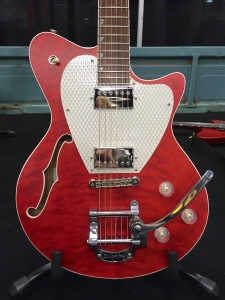 With messages of equality on the dash, the #kolltruck served as both display and stage, making the perfect backdrop for his guitars. Whenever there was a demo session, the performer would sit atop the truck bed and plug into a Benson amp. It’s also a total conversation starter, and I’m sure a number of convention goers stopped by simply because who even parks a truck on the show floor! What a brilliant move.
With messages of equality on the dash, the #kolltruck served as both display and stage, making the perfect backdrop for his guitars. Whenever there was a demo session, the performer would sit atop the truck bed and plug into a Benson amp. It’s also a total conversation starter, and I’m sure a number of convention goers stopped by simply because who even parks a truck on the show floor! What a brilliant move.
It’s a good thing Saul’s guitars are works of art unto themselves, or the truck would be the only thing to speak of here. Saul brought with him a number of guitars, each beautifully finished and in a number of configurations. This semi-hollow red devil pictured to the right came loaded with humbuckers and a Bigsby vibrato, sporting a guard with a Guilloché (engine-turned) look. There was also a yellow offset Jr-style hard-tail and a bass equipped with a Novak Bisonic/Dark Star pickup that caught my attention. There was even one model loaded with two TK Smith Summertone pickups that just demanded to be played. I’d take them all home in a heartbeat. 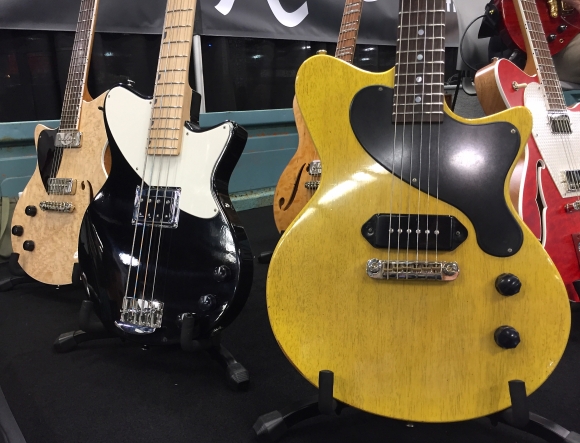 Saul Koll is one of those builders that seems incapable of producing something you don’t immediately want to own. Look, feel, playability, it’s all there.
Saul Koll is one of those builders that seems incapable of producing something you don’t immediately want to own. Look, feel, playability, it’s all there.
SATELLITE AMPS (Booth 1595)
Satellite has long been one of my favorite amp companies, but now that they offer both guitars and effects pedals, they may end up being my favorite one-stop shop for all of my instrumental needs. It’s not often that a brand, well-known for one thing, can easily make the transition into other areas, often sacrificing quality in their bread-and-butter area of expertise to build up the new side of the business, or doing one thing great and everything else averagely.
There is nothing average about Satellite.
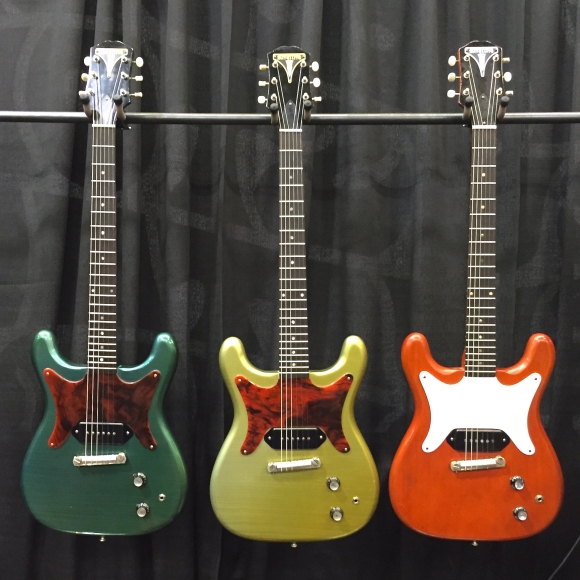
I may not need to tell you how great these amps are, but the guitars, I’m gonna have to beg your pardon because I’m about to preach. Adam and co. have done something that seems impossible, making a single-pickup guitar of the Jr. family that stands out from the rest. It’s a simple machine, right? Just a pickup and a stop bar, how hard can it be?
But there’s so much more to the Satellite Coronet. Satellite Founder Adam Grimm has a deep love of the 1960s Epiphone Coronet, as well as the entire Gibson family of student models. The first time I met the guy back at the LA Amp Show in 2015, he handed me guitar after guitar in the vein, praising them for their understated genius. Inarguably, Adam knows what makes a cool guitar, so combine this with his enthusiasm and tenacity, and Satellite is the clear choice for the perfect company to pull this off.
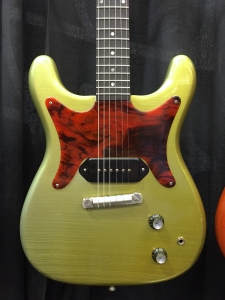 When I saw Adam months ago at the Fretboard Journal Summit, he brought along the red prototype, as seen in the photo above. I fell in love with the thing immediately, and even though I couldn’t plug in, the neck begged to be played and the thing rang out like a peal of thunder on a quiet night.
When I saw Adam months ago at the Fretboard Journal Summit, he brought along the red prototype, as seen in the photo above. I fell in love with the thing immediately, and even though I couldn’t plug in, the neck begged to be played and the thing rang out like a peal of thunder on a quiet night.
If you can imagine, somehow Satellite have made the production models even better. The instrument is perfectly light-weight, beautifully finished in a range of tastefully-aged colors. It’s trite to call out a finish for looking “just like the real deal” these days, but I’m going to say it anyway: it looks like the real deal. The authenticity of the shape, the range of delicious colors, the suitably snarly pickup, the chunky-yet-not-baseball-bat neck shape, all of these features had me asking the price before I’d even figured out what I could sell to afford one.
I really can’t say enough about the guitars, except that plugged-in, they’re jaw-droppingly good. If you’re looking for an exceptional student-style guitar, even if you’re in the market for vintage, you may want to consider this one. There’s even a two-pickup model which I neglected to photograph that’s still haunting me these few days later. 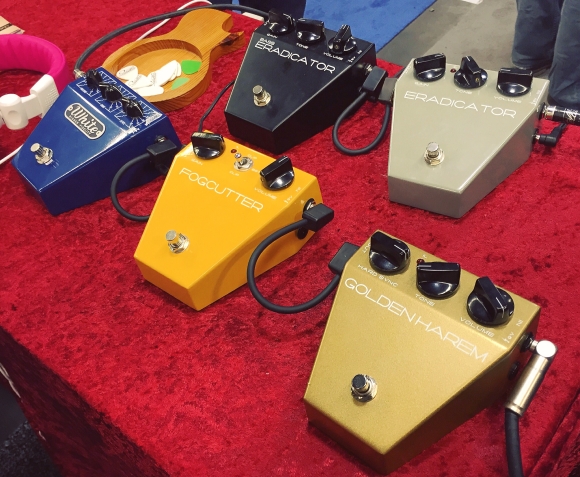
Didn’t I mention pedals? I think I did! Satellite also saw fit to grace us with a new line of five pedals, and once again, they knocked it right out of the park. The Golden Harem is a delightful octave-fuzz that’s both sputtery and harmonically rich, while the Fog Cutter’s selectable transistors offer an entirely different fuzz experience ranging from brash to wooly. The White-branded pedal (blue, far left) is essentially one of their White reissue amplifiers in a box, but with the tubes swapped out for transistors. If you’ve ever played a White but couldn’t own one for yourself, this pedal nails the sound and the feel of these nearly-mythical Fender-made amps. It’s a total set-and-forget kind of pedal, too; this unit could easily become your main sound.
The Eradicator pedals, both in guitar and bass versions, were the ones that spoke to me most. I don’t recall ever playing a tube-driven pedal and walking away impressed before; something about the response of such units and their muddy tones has always left me cold and unwilling to add one to my stable. The Eradicator may have completely flipped the script on me with its nasty, big-bodied drive. These pedals were loud and in charge, if that makes any sense, and maybe the most fun I’ve had with a pedal during the entire show.
I definitely didn’t want to stop playing once I’d started, especially once I turned on the Bass version (black, upper left). Meant for bass instruments and with a separate DI out, this one really slayed me with its mean, dark tones and bigger, rounder low end. I’m in love!
KAUER/TITAN GUITARS (Booth 1294)
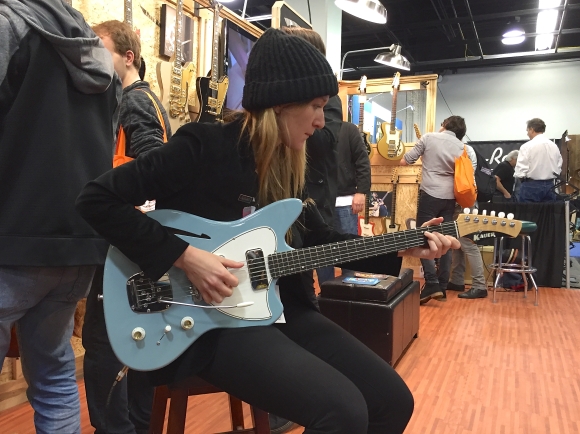
Vanessa loved this one loaded with Lollar Model One pickups
My buddies at Kauer Guitars always have a really great booth. With wooden crate decor and a lot of floor space with plenty of benches and stools, I was hard pressed to find another booth as comfortable, like your favorite guitar shop.
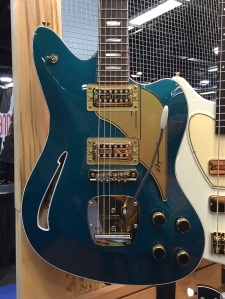 Kauer brought with them a number of stunning pieces, including an Argonaut dressed in a metallic blue finish and Mastery hardware Kauer had gold plated specially for the model. I spent some time with it and found it to be one of those rare magical guitars, the kind you come across once in a while that give you that achy feeling deep down. An impressive guitar to be sure, it’s sadly not for sale.
Kauer brought with them a number of stunning pieces, including an Argonaut dressed in a metallic blue finish and Mastery hardware Kauer had gold plated specially for the model. I spent some time with it and found it to be one of those rare magical guitars, the kind you come across once in a while that give you that achy feeling deep down. An impressive guitar to be sure, it’s sadly not for sale.
Kauer also came fully loaded with their more affordable line of Titan Guitars. Made in California, the Titan KR-1 has a more-or-less modular design so that the basic guitar is ready to go until a buyer decides what specs the final product will have. Choose a satin body color and a pickguard, pickups, bridge, and switching and you’re all set. A huge variety of the model’s possible configurations were on display, each of them exciting in their own way. My favorite: this single-pickup bruiser as played by Josh Scogin of the band ’68. Just a Duncan humbucker wired directly to the output jack. Yes, please.
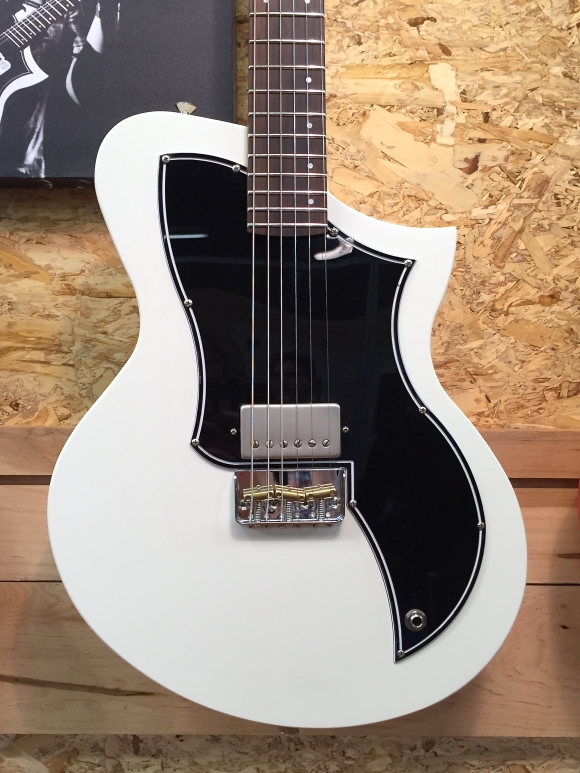
PRISMA GUITARS (Booth 1399)
I’ve been following Prisma’s progress for quite a while now, I really couldn’t be more excited by their work. Nick Pourfard and Co. recycle old skateboards by gluing them together and then shaping them into guitars. Like, really. It’s amazing. Take a moment and stare at this, even if you don’t get it at first:
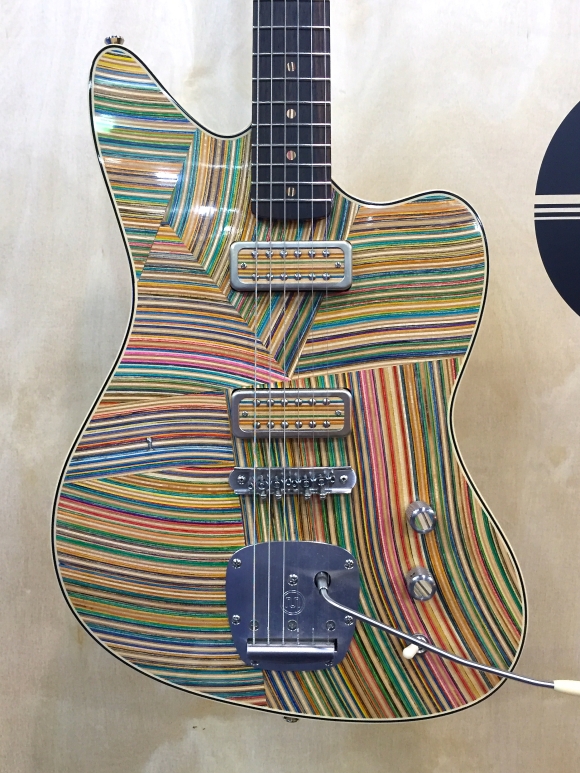
I’m so, so into this. The playful visual cue of the multi-colored boards coming together at different angles is a treat for the eyes, but then again, I’m a sucker for lots of bright colors. Believe it or not, they sound just as good as they look!
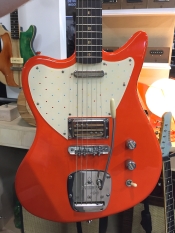 Loaded with McNelly pickups and Mastery Bridge hardware, these guitars are set up for greatness immediately. The necks are fast but not too thin, frets are expertly crowned, and the guitars feel so familiar that if you weren’t looking, you’d forget you were playing something made from skateboards.
Loaded with McNelly pickups and Mastery Bridge hardware, these guitars are set up for greatness immediately. The necks are fast but not too thin, frets are expertly crowned, and the guitars feel so familiar that if you weren’t looking, you’d forget you were playing something made from skateboards.
I’ve been looking forward to playing these guitars for a long, long time, and I’m happy to report that Prisma totally met my expectations. I’d like to note that if the look of skateboard guitars aren’t your thing, Prisma also offers standard finishes, as well as guitars made from traditional body woods as well. Check out the orange Sunset model pictured here, Prisma’s long-scale take on the Squier Super Sonic model!
TEMPLE BOARDS/MATTHEWS EFFECTS (Booth 1791)
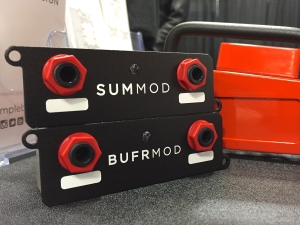
I caught up with my friend Rick Matthews of Matthews Effects, who was on-hand at the Temple Audio Design booth to tell me all about his new partnership with the company. Rick designed a new line of modular end panels, fully interchangeable and easily installed and swapped by the user. These new panels come in an array of different designs, from the SUMMOD which allows musicians who run stereo to never think about connections again, to the built-in BUFRMOD which can run as six different kinds of buffer setups including stereo, dual-amp, and fully mono. Pedal junkies should take note; while I lament the overuse of the phrase “game changer,” it’s fully applicable here.
Non-Temple owners will be pleased to find that some of these modules will be available as standalone units.
MARSHALL AMPLIFICATION (Booth 5740)
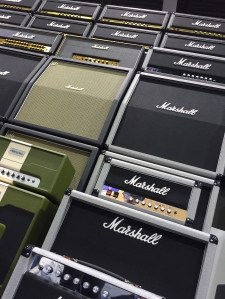 Even if you’re a newcomer to the NAMM convention, there’s no way you’d be able to miss the Marshall exhibit. With literal walls of amps on the corner of the main drag, it’s hard not to be impressed by stack after stack of iconic amps.
Even if you’re a newcomer to the NAMM convention, there’s no way you’d be able to miss the Marshall exhibit. With literal walls of amps on the corner of the main drag, it’s hard not to be impressed by stack after stack of iconic amps.
I headed over to Marshall on my third day at NAMM not simply to browse, but because I’d been invited there by Chris Robinson, social media manager for the company and punk rock enthusiast. After reposting a few of my photos on Instagram, as well as kindly sharing the music video for my rendition of Silent Night on Christmas, he reached out to me asking if I’d be interested in meeting up and having a look at some of Marshall’s products. Of course I would, don’t be ridiculous.
Marshall may not have any spanking new amps for this year, but last year’s models were still new to me. Of all the things I saw and played at last year’s NAMM, I just didn’t get around to checking out any of what Marshall had to offer. In chatting with Chris, we briefly went over the newly-redesigned CODE 100 modelling head, and talked a bit about how the Astoria series has been recieved, being Marshall’s answer to the hipper boutique amps of the day. I pointed out that I hadn’t seen the 2525 Mini Jubilee head before, and Chris excitedly told me that they’d “…kept all of the tone, just made it smaller.”
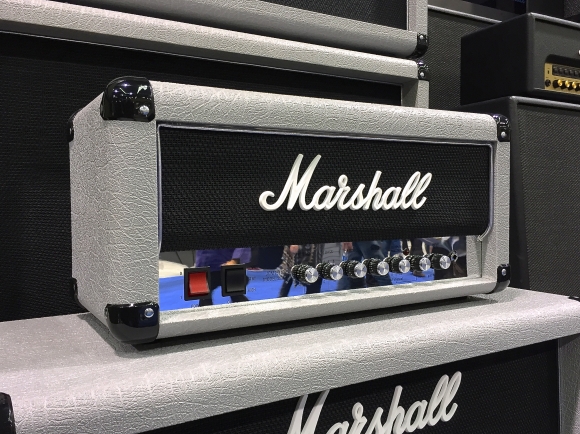 I balked at the idea initially; I’m a huge fan of the original release as well as the recent Silver Jubilee reissues, I just couldn’t imagine this being true. The sheer number of mini-amps on the market that all make the same claim yet ultimately fail to measure up may have soured me on the idea, but Chris persisted. “Look,” he said, picking up the head and turning it around, “big bottles!”
I balked at the idea initially; I’m a huge fan of the original release as well as the recent Silver Jubilee reissues, I just couldn’t imagine this being true. The sheer number of mini-amps on the market that all make the same claim yet ultimately fail to measure up may have soured me on the idea, but Chris persisted. “Look,” he said, picking up the head and turning it around, “big bottles!”
The mini-amp craze seems fully reliant upon the EL84 tube, which is a great valve but not the one that I associate with some of my favorite higher-wattage heads like the Marshall. Seeing the glimmer of full-size 34s through the metal panel, well, that gave me all kinds of hope.
Chris ushered me into Marshall’s personal ISO booth to prove it to me, which is perhaps my favorite location in all of NAMM. Before he hooked up the amp I begged him to pause for a moment, just letting the silence overtake us. NAMM is loud, like Guitar Center times 30 loud. Anyway, after a gloriously brief moment, Chris plugged in an Arcane humbucker-equipped Strat and turned me loose on the 2525, instantly greeted with––you guessed it––the very tone I scarcely believed would come from a tiny head and cab.
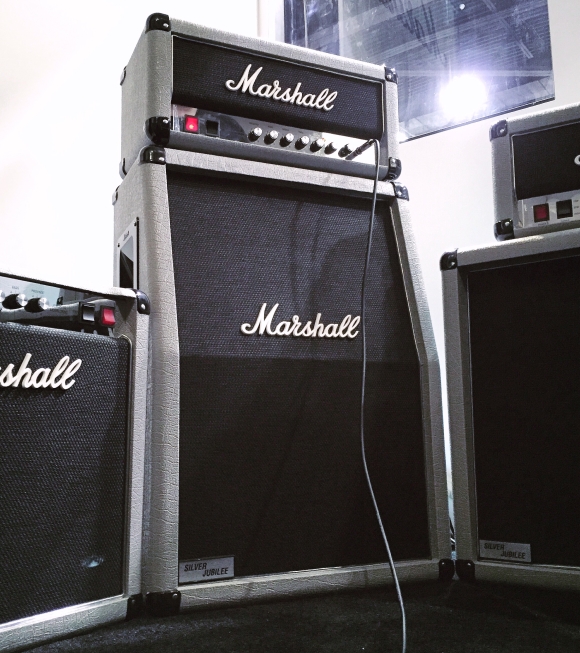 After performing my usual tone tweaks (Presence and Treble at zero thank-you-very-much) and cranking up the preamp, I was in my own personal Alterna-Rock heaven. Suitably crunchy and brimming with that strident midrange Marshall are famous for, this amp delivered every bit of the good stuff I craved. All of this at 20 Watts, too (switchable to 5).
After performing my usual tone tweaks (Presence and Treble at zero thank-you-very-much) and cranking up the preamp, I was in my own personal Alterna-Rock heaven. Suitably crunchy and brimming with that strident midrange Marshall are famous for, this amp delivered every bit of the good stuff I craved. All of this at 20 Watts, too (switchable to 5).
Also, that vertical 2×12 cab has nearly the same dimensions as my favorite vintage Marshall 8×10 cabs, so it’s safe to assume that I am very much into the look of this little stack. I need one. Thanks a lot, Chris!
***
Like I said before, there was a LOT to do and see at NAMM 2017, and in the space of three days, I probably got to mess with more gear than I will in as many months this year. I can’t wait for the next.
Special thanks to my pals at Sinasoid cables for the pass! You’re the best. Everybody, go buy some cables from them––may I humbly suggest my signature Redbeard for starters?
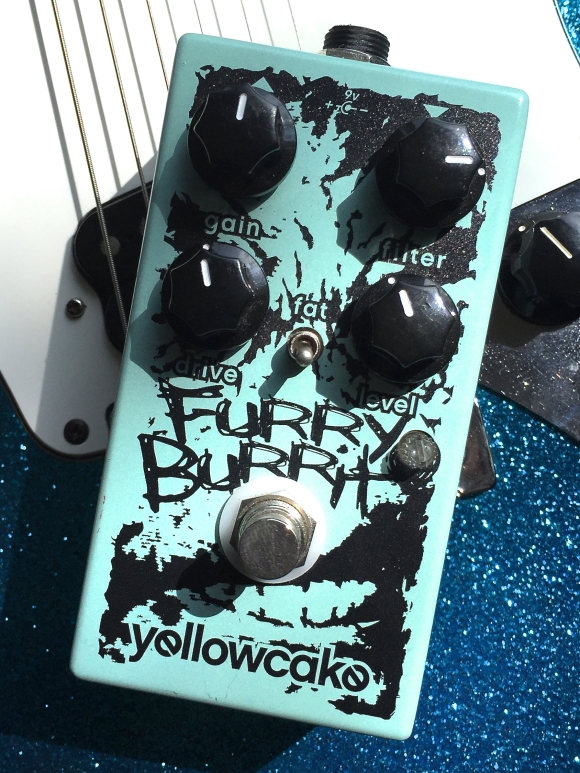

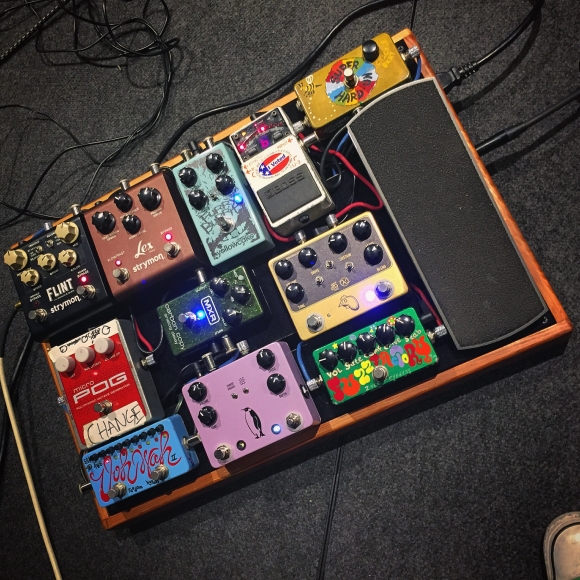




 After chatting for a while, we decide to walk the floor for a bit. We were mere booths away when O told me, “Oh, you gotta check out this tuner pedal. It’s the best tuner pedal in the world.” When O says something like that, I take it at face value. We followed him to the HOTONE booth, where he pointed out a comically small pedal and declared, “There it is, my favorite tuner pedal ever.”
After chatting for a while, we decide to walk the floor for a bit. We were mere booths away when O told me, “Oh, you gotta check out this tuner pedal. It’s the best tuner pedal in the world.” When O says something like that, I take it at face value. We followed him to the HOTONE booth, where he pointed out a comically small pedal and declared, “There it is, my favorite tuner pedal ever.”
 With messages of equality on the dash, the #kolltruck served as both display and stage, making the perfect backdrop for his guitars. Whenever there was a demo session, the performer would sit atop the truck bed and plug into a Benson amp. It’s also a total conversation starter, and I’m sure a number of convention goers stopped by simply because who even parks a truck on the show floor! What a brilliant move.
With messages of equality on the dash, the #kolltruck served as both display and stage, making the perfect backdrop for his guitars. Whenever there was a demo session, the performer would sit atop the truck bed and plug into a Benson amp. It’s also a total conversation starter, and I’m sure a number of convention goers stopped by simply because who even parks a truck on the show floor! What a brilliant move. Saul Koll is one of those builders that seems incapable of producing something you don’t immediately want to own. Look, feel, playability, it’s all there.
Saul Koll is one of those builders that seems incapable of producing something you don’t immediately want to own. Look, feel, playability, it’s all there.
 When I saw Adam months ago at the Fretboard Journal Summit, he brought along the red prototype, as seen in the photo above. I fell in love with the thing immediately, and even though I couldn’t plug in, the neck begged to be played and the thing rang out like a peal of thunder on a quiet night.
When I saw Adam months ago at the Fretboard Journal Summit, he brought along the red prototype, as seen in the photo above. I fell in love with the thing immediately, and even though I couldn’t plug in, the neck begged to be played and the thing rang out like a peal of thunder on a quiet night.

 Kauer brought with them a number of stunning pieces, including an Argonaut dressed in a metallic blue finish and Mastery hardware Kauer had gold plated specially for the model. I spent some time with it and found it to be one of those rare magical guitars, the kind you come across once in a while that give you that achy feeling deep down. An impressive guitar to be sure, it’s sadly not for sale.
Kauer brought with them a number of stunning pieces, including an Argonaut dressed in a metallic blue finish and Mastery hardware Kauer had gold plated specially for the model. I spent some time with it and found it to be one of those rare magical guitars, the kind you come across once in a while that give you that achy feeling deep down. An impressive guitar to be sure, it’s sadly not for sale.

 Loaded with
Loaded with 
 Even if you’re a newcomer to the NAMM convention, there’s no way you’d be able to miss the
Even if you’re a newcomer to the NAMM convention, there’s no way you’d be able to miss the  I balked at the idea initially; I’m a huge fan of the original release as well as the recent Silver Jubilee reissues, I just couldn’t imagine this being true. The sheer number of mini-amps on the market that all make the same claim yet ultimately fail to measure up may have soured me on the idea, but Chris persisted. “Look,” he said, picking up the head and turning it around, “big bottles!”
I balked at the idea initially; I’m a huge fan of the original release as well as the recent Silver Jubilee reissues, I just couldn’t imagine this being true. The sheer number of mini-amps on the market that all make the same claim yet ultimately fail to measure up may have soured me on the idea, but Chris persisted. “Look,” he said, picking up the head and turning it around, “big bottles!” After performing my usual tone tweaks (Presence and Treble at zero thank-you-very-much) and cranking up the preamp, I was in my own personal Alterna-Rock heaven. Suitably crunchy and brimming with that strident midrange Marshall are famous for, this amp delivered every bit of the good stuff I craved. All of this at 20 Watts, too (switchable to 5).
After performing my usual tone tweaks (Presence and Treble at zero thank-you-very-much) and cranking up the preamp, I was in my own personal Alterna-Rock heaven. Suitably crunchy and brimming with that strident midrange Marshall are famous for, this amp delivered every bit of the good stuff I craved. All of this at 20 Watts, too (switchable to 5). We stayed to see a demo set by Sarah Lipstate, who weaves spooky and cinematic tapestries of sound under the moniker
We stayed to see a demo set by Sarah Lipstate, who weaves spooky and cinematic tapestries of sound under the moniker 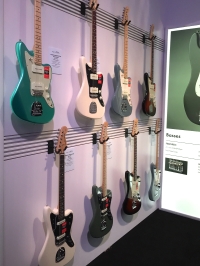 From EarthQuaker, we headed straight upstairs to check in on what Fender was up to at NAMM 2017. Fender’s exhibit is even more exciting than last year, boasting a ton of Custom Shop instruments and the new American Pro line as well. The full AMPRO line was well-represented: Strats, Teles, Jazzmasters, Jaguars, Precision and Jazz basses too. Decked out in new, bright colors, your first look at 2017 Fender is a pretty sight for sure.
From EarthQuaker, we headed straight upstairs to check in on what Fender was up to at NAMM 2017. Fender’s exhibit is even more exciting than last year, boasting a ton of Custom Shop instruments and the new American Pro line as well. The full AMPRO line was well-represented: Strats, Teles, Jazzmasters, Jaguars, Precision and Jazz basses too. Decked out in new, bright colors, your first look at 2017 Fender is a pretty sight for sure.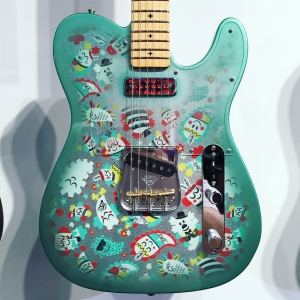


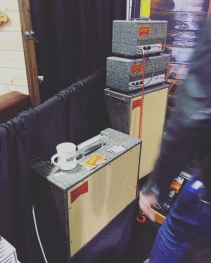 It’s always good to see friends, and
It’s always good to see friends, and 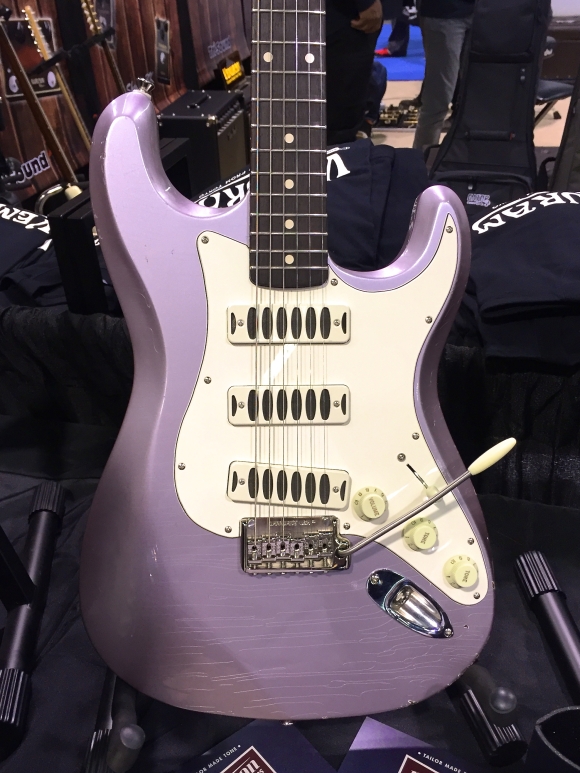
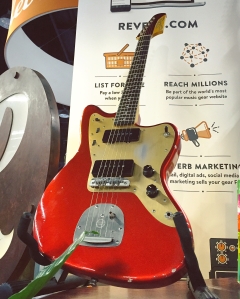 It’s always good to run into the fine folks at
It’s always good to run into the fine folks at 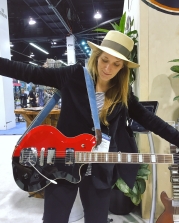
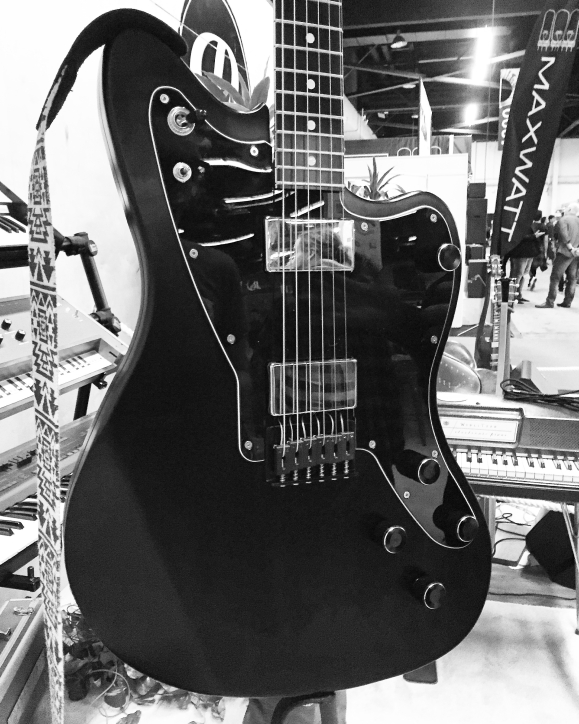
 Fender began sending them out to musicians and social media stars late in the year (where’s the love?!) but kept quiet about specs. Much of what was known about the models was deduced by blowing up blurry Instagram photos and leaked catalogue pages. Excitement soared, and soon I was buried under requests for The Jazzmaster Guy’s take on the new models.
Fender began sending them out to musicians and social media stars late in the year (where’s the love?!) but kept quiet about specs. Much of what was known about the models was deduced by blowing up blurry Instagram photos and leaked catalogue pages. Excitement soared, and soon I was buried under requests for The Jazzmaster Guy’s take on the new models.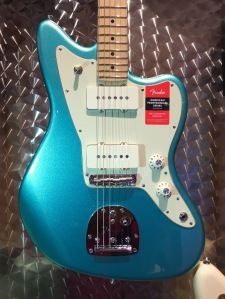
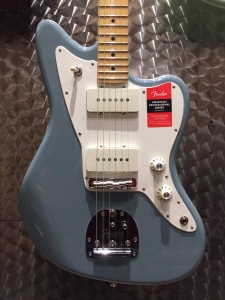
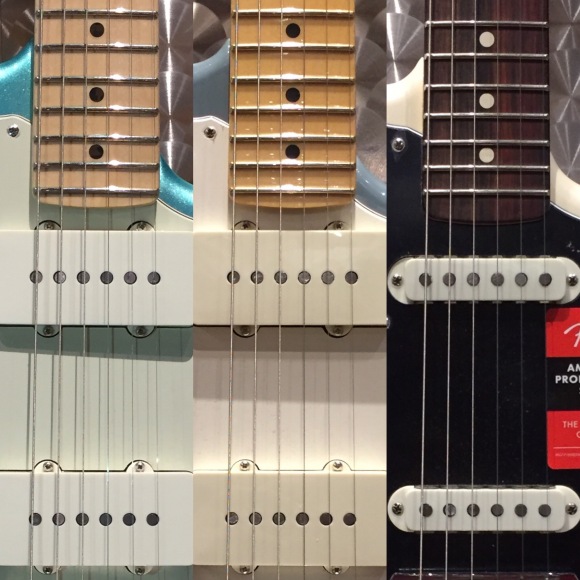

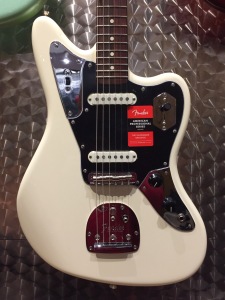
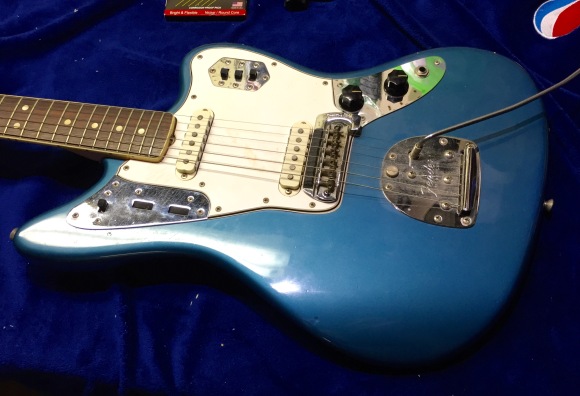
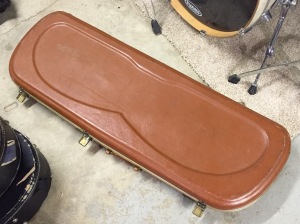
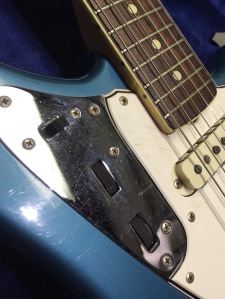 Before I arrived, Mike gave me a run-down of what the guitar might need. For starters, he wasn’t getting any sound out of the thing, and my first thought was that the Rhythm Circuit switch may have a bad solder joint. When I finally got my hands on it, the solder joints didn’t look obviously inoperable, but I thought it a safe bet to simply reflow a few key joints. This certainly helped, and suddenly I was getting sound from the Lead Circuit, with intermittent functionality of the RC.
Before I arrived, Mike gave me a run-down of what the guitar might need. For starters, he wasn’t getting any sound out of the thing, and my first thought was that the Rhythm Circuit switch may have a bad solder joint. When I finally got my hands on it, the solder joints didn’t look obviously inoperable, but I thought it a safe bet to simply reflow a few key joints. This certainly helped, and suddenly I was getting sound from the Lead Circuit, with intermittent functionality of the RC.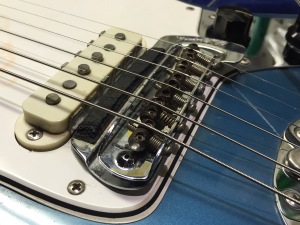 I took the strings off, removed the bridge, and gave the guitar a thorough cleaning, from finish to frets. It wasn’t filthy by any means, but the frets showed signs of disuse and the finish had a dull shine. It’s Christmas, after all; this should feel like an entirely new guitar. After a good polish of the finish and frets, and some lemon oil for the rosewood fretboard, this guitar came right back to life.
I took the strings off, removed the bridge, and gave the guitar a thorough cleaning, from finish to frets. It wasn’t filthy by any means, but the frets showed signs of disuse and the finish had a dull shine. It’s Christmas, after all; this should feel like an entirely new guitar. After a good polish of the finish and frets, and some lemon oil for the rosewood fretboard, this guitar came right back to life.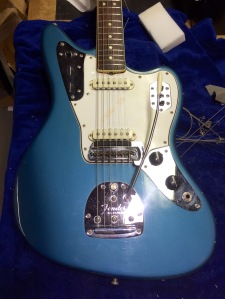 When I was finished, I hovered above the thing, not quite sure how to feel. This was the guitar from my youth that elicited such passion, though my ignorance kept me from fully embracing the model. I couldn’t believe that I was able to give back, as it were, to that first Jaguar. I dreamed about this shimmering blue guitar for years, and here I was, ready to play it as it should always have been. And play, I did; the sound, the feel, the response… it was magical.
When I was finished, I hovered above the thing, not quite sure how to feel. This was the guitar from my youth that elicited such passion, though my ignorance kept me from fully embracing the model. I couldn’t believe that I was able to give back, as it were, to that first Jaguar. I dreamed about this shimmering blue guitar for years, and here I was, ready to play it as it should always have been. And play, I did; the sound, the feel, the response… it was magical.